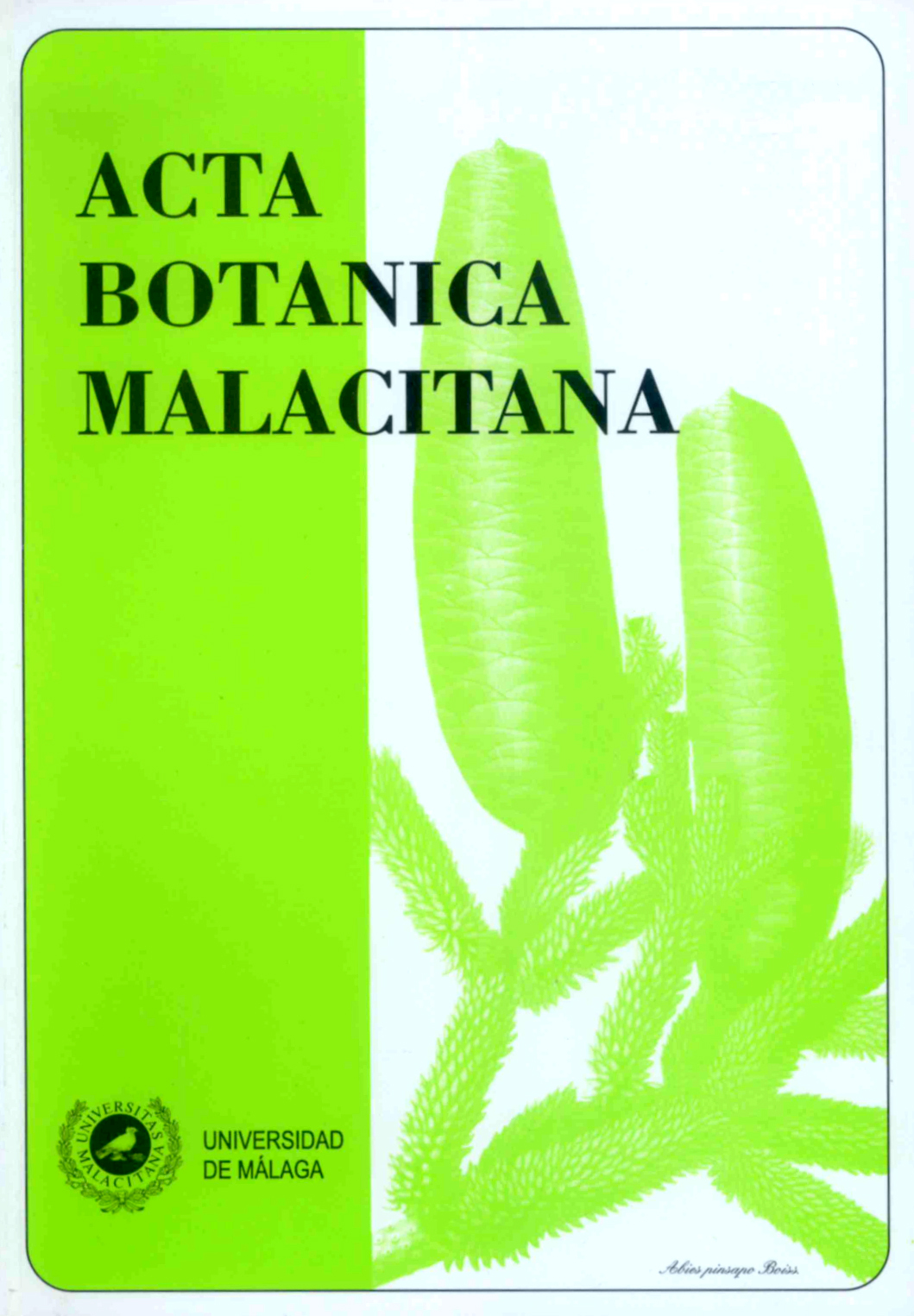Datos sobre la vegetación de los llanos occidentales del Orinoco (Venezuela).
DOI:
https://doi.org/10.24310/abm.v31i31.7124Abstract
RESUMEN. Datos sobre la vegetación de los Llanos Occidentales del Orinoco (Venezuela). Los Llanos Occidentales del Orinoco se caracterizan por ser una gran cuenca sedimentaria donde se alternan sustratos arcillosos y arenosos. El bioclima infratropical subhúmedo y la cantidad de ambientes palustres originan una gran diversidad de comunidades vegetales, en especial de helófitos, pleustohelófitos e hidrófitos. Cuando la inundación es más escasa, aparecen los bosques, arbustedas y los pastos secos de la sabana, que forman isleos de comunidades vegetales en medio de la llanura inundable. Hemos podido reconocer 17 asociaciones repartidas en 10 clases fitosociológicas: Cabombo- Nymphaeetea (comunidades de hidrófitos), Ceibetea occidentalis (bosques y arbustedas), Cladietea jamaicensis (comunidades de helófitos), Coccolobietea obtusifoliae (arbustedas riparias), Lemnetea minoris (comunidades de pleustófitos), Leptocoryphio-Trachypogonetea (pastizales secos de la sabana), Pistio stratiotidis-Eichhornietea crassipedis (comunidades de pleustohelófitos), Polygono arenastri-Poetea annuae (comunidades nitrófilas resistentes al pisoteo), Sido-Stachytarphetaetea (comunidades nitrófilas) y Xyridetea savanensis (pastizales temporalmente inundados con plantas anuales). Además, describimos como novedades sintaxonómicas 4 asociaciones (Bromelio chrysanthae- Platymiscietum pinnati, Geophiletum repentis, Helictero guazumifoliae-Bauhinietum benthamianae y Randio venezuelensis-Annonetum jahnii), 6 alianzas (Coccolobion obtusifoliae, Desmonco orthacanthi-Platymiscion pinnati, Heterantherion reniformis, Nectandro globosae-Viticion orinocensis, Oryzion perennis y Wissadulo periplocifoliae-Cassion torae), 3 órdenes (Bactrido guineensis-Cecropietalia peltatae, Coccolobietalia obtusifoliae y Eleocharitetalia minimae) y 1 clase (Coccolobietea obtusifoliae).
Palabras clave. Vegetación, sintaxonomía, Llanos, Venezuela.
ABSTRACT. Data about the vegetation of the Occidental Llanos of the Orinoco (Venezuela). The western Llanos of the Orinoco river are a sedimentary basin of sandy and clayey mixed soils. The infratropical subhumid bioclimate and the large marshes cause a high diversity of plant communities consisting specially of helophytes, pleustohelophytes and hydrophytes. When there is a little flooding, forest, shrubs and dry pastures of the savannas appear, forming islands of plant communities in the swampy plain. Seventeen associations belonging to 10 classes have been recognized (Cabombo- Nymphaeetea (hydrophytic communities), Ceibetea occidentalis (forests and shrubs), Cladietea jamaicensis (helophytic communities), Coccolobietea obtusifoliae (riparian shrubs), Lemnetea minoris (pleustophytic communities), Leptocoryphio-Trachypogonetea (dry pastures of the savanna), Pistio stratiotidis-Eichhornietea crassipedis (pleustohelophytic communities), Polygono arenastri-Poetea annuae (nitrophilous communities adapted to treading), Sido-Stachytarphetaetea (nitrophilous communities) and Xyridetea savanensis (temporal flooded pastures with annual plants). Moreover, 4 new associations (Bromelio chrysanthae-Platymiscietum pinnati, Geophiletum repentis, Helictero guazumifoliae-Bauhinietum benthamianae and Randio venezuelensis-Annonetum jahnii), 6 alliances (Coccolobion obtusifoliae, Desmonco orthacanthi-Platymiscion pinnati, Heterantherion reniformis, Nectandro globosae-Viticion orinocensis, Oryzion perennis y Wissadulo periplocifoliae-Cassion torae),
3 orders (Bactrido guineensis-Cecropietalia peltatae, Coccolobietalia obtusifoliae and Eleocharitetalia minimae) and 1 class (Coccolobietea obtusifoliae) are described.
Key words. Vegetation, syntaxonomy, Llanos, Venezuela.
Downloads
Metrics
Downloads
Published
How to Cite
Issue
Section
License
All information related to the licensing of published works in Acta Botanica Malacitana and copyright can be found in our Editorial Policy.







1.png)
